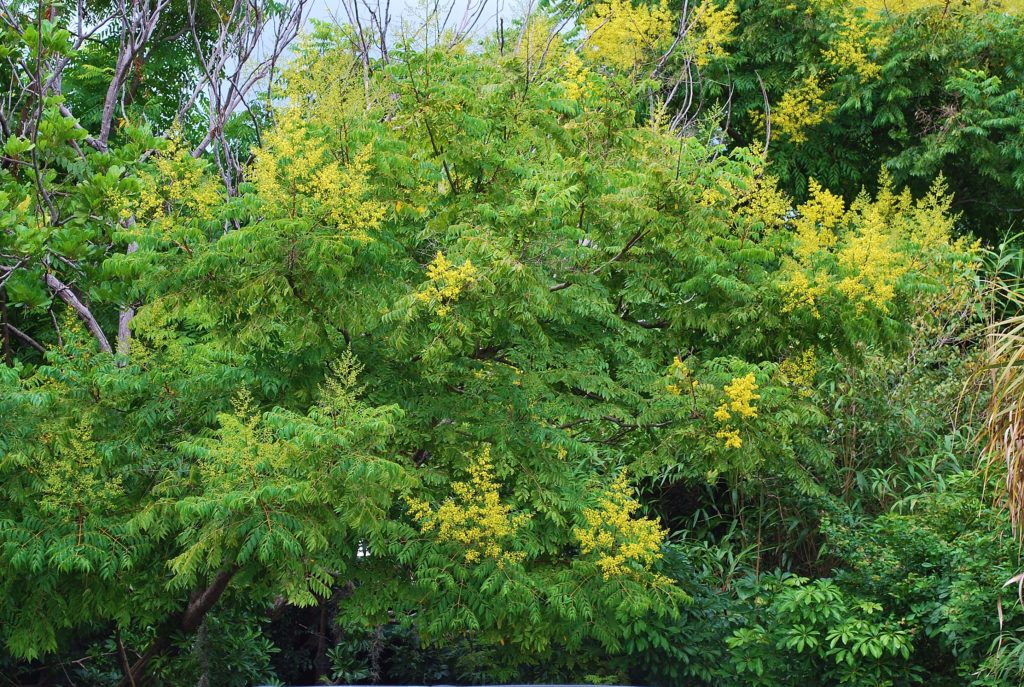In bloom now or soon to be, the golden rain tree (Koelreuteria elegans) is a tree I remember fondly from childhood. Unfortunately, the blooms and seed pods that fascinate me are connected to a tree with a few problems for some areas of the US. However, golden rain tree is messy, brittle, and can be invasive

Golden rain trees are small to medium-sized deciduous trees native to China and Korea. They generally have an overall irregular to round shape, often with multiple trunks. The soft, green, large, many-parted, twice pinnate leaves have irregular, roughly oval, and coarsely toothed or lobed leaflets. The leaves emerge in the spring light to medium green-tinted with pink or bronze. They are bright green in summer and turn buttery yellow in the fall. Fall foliage color is often missing here in Florida.
In fall or very late in the summer, blooms appear at the ends of the branches. They are small, yellow, and open over several weeks. The seedpods that follow the flowers are also showy, papery like miniature Chinese lanterns, and greenish pink to red maturing to tan and brown. The numerous flowers, seed pods, and leaves that drop over many months makes this a messy tree; strike one.
Golden rain trees are tolerant of many conditions and are great urban trees tolerant of pollution, heat, salt, and drought. They prefer well-drained soil and full sun but will grow in partial shade. Golden rain trees tend to have open, rangy, leaning habits and brittle wood, which breaks during windstorms; strike 2. Prune them while young to establish a good branch structure and a tidy shape.
Strike 3 is that though pretty, the golden rain tree is a bit of a garden thug and pops up uninvited in the landscape and natural areas. The Florida Exotic Pest Plant Council (FLEPPC) classifies the golden rain tree as a Category II invasive exotic plant.
FLEPPC Category II plants are defined as “Invasive exotics that have increased in abundance or frequency but have not yet altered Florida plant communities to the extent shown by Category I species. These species may become ranked Category I if ecological damage is demonstrated.” View a list of both Categories I and II invasive plants here.
Long ago, I gave up planting the lovely golden rain tree. There are many flowering trees for the landscape that are equally pretty and better suited for the environment. A few favorites include:
- Cinnamon Bark – a moderate-sized 18 -20 feet tall tree that blooms sporadically throughout the year and is drought tolerant
- Yellow Elder – fast-growing and lovely fall-blooming but needs a bit of pruning to shape into a tree, or
- Jamaica Caper – very slow-growing to 18 feet with pretty summer blooms and showy fall fruit.
Wherever you call home, consider installing a native tree instead of the invasive golden rain tree.
This article first appeared in the Treasure Coast Newspapers.
Leave a Reply